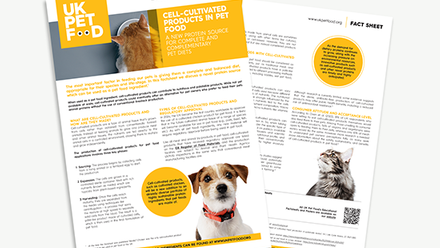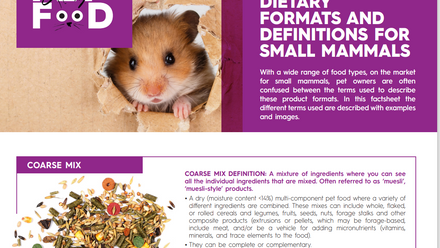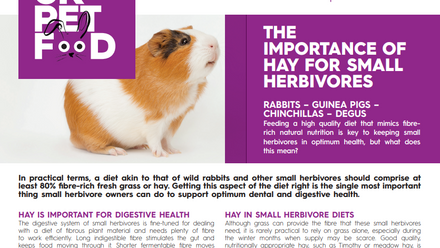Types of Hay For Small Herbivores
Grass Hay
Timothy hay and meadow hay are popular and nutritionally appropriate choices of grass hay for feeding small herbivores. Their nutritional value varies according to several factors, including the growth stage at the time of harvesting, storage conditions, and hay species.
Timothy Hay
Timothy hay is a high-quality grass hay that lasts a long time. It contains a lot of fiber that can't be digested, which helps keep the gut moving smoothly. Its rough texture also helps wear down rabbits' teeth properly. Timothy hay naturally has very little calcium. When rabbits eat calcium, their bodies absorb almost all of it, so the amount can change a lot depending on what they eat. If they get too much calcium, they might get bladder stones. Since Timothy hay is naturally low in calcium, you can give it to rabbits in large amounts without worries.
Meadow Hay
Meadow hay is a general name for hay that's cut from fields that have been there for a while. It might have not only grass but also other plants and flowers. Meadow hay is usually softer than Timothy hay. The nutrients in it depend on what types of grasses and other plants are mixed in the hay.
Alfalfa Hay
Alfalfa hay comes from a type of plant called a legume. It has more fibre but also more protein and calcium than grass hay. Having more calcium (around 1-2%) is great for helping young animals grow and for mothers who are nursing baby animals. You shouldn't give alfalfa hay to grown-up rabbits. It can be used in pellet diets, but only if the recipe is made to have the right amounts of calcium and protein for the animals' needs.
Hay Quality
Poor-quality hay lacks the right balance of nutrients that small herbivores need. It may also contain particles of dust or mould that can cause health issues as well as affecting nutrient content. Hay quality varies according to hay type plus other factors, including:
Growth Stage At The Time Of Harvest
Timothy hay can be cut at different times, and this affects its qualities. The first cut has the most fibre, the second cut has more leaves and fewer stems, and the third cut has even more leaves and less fibre. Usually, the first cut of Timothy hay, with its extra fibre, is better for the nutrition needs of small plant-eating animals compared to later cuts.
Handling & Storage
Hay can lose its quality if it's not taken care of properly. After it's cut, hay should dry out fast when it's sunny outside. When it has the right amount of moisture, it should be kept off the ground, away from moisture, and in a place with good airflow.
Identifying Good Hay Quality
There are two main ways to check the quality of hay – by looking at it and by analyzing it. The first way is pretty reliable if done right. When you visually inspect hay, you should:
- Look at the colour: Good hay should be green or green-gold and feel dry. If it's lost its colour due to sun, rain, or being stored improperly, it's not as nutritious. Light-coloured hay might also mean it was cut when it was too mature.
- Smell it: Good hay should have a fresh smell, like newly cut grass. If it smells musty, it's probably lower quality and might have been stored in a damp place.
- Check for dust or mould: Good hay doesn't have dust or mould. Some hay is even processed to remove dust and lower the risk of breathing problems.
- Look for foreign objects: Good hay doesn't have anything strange in it.
While looking at the hay can give you a good idea of its quality and nutrition, you need to do a forage analysis to know exactly how much each nutrient is in it.





